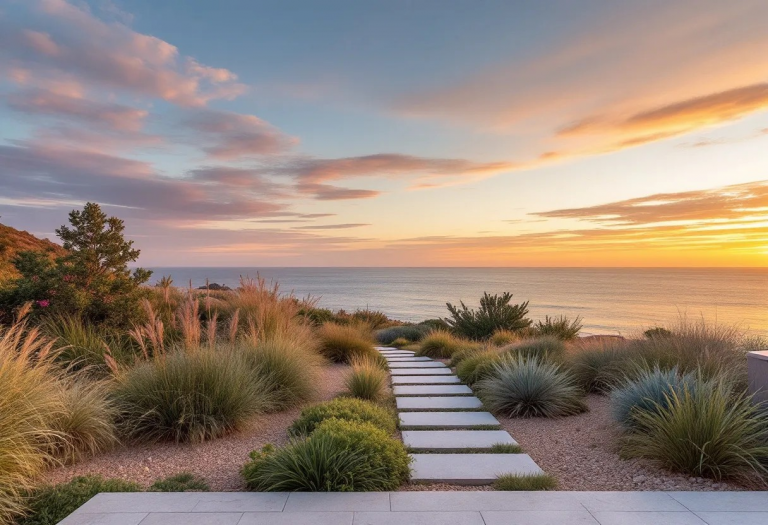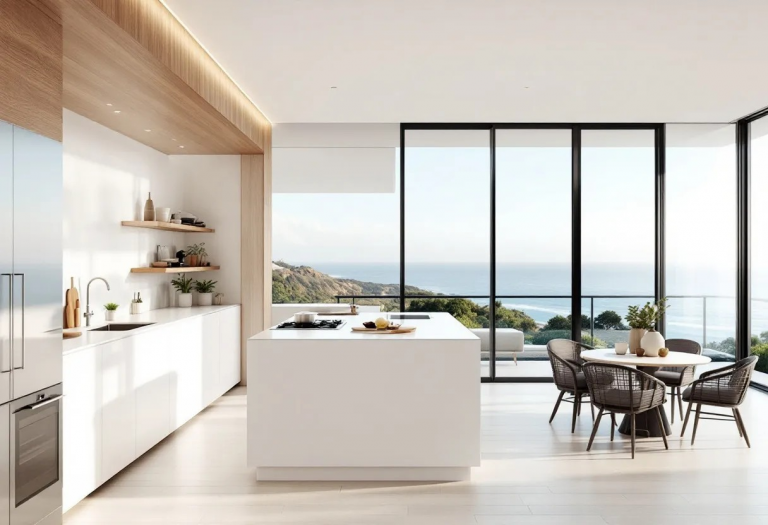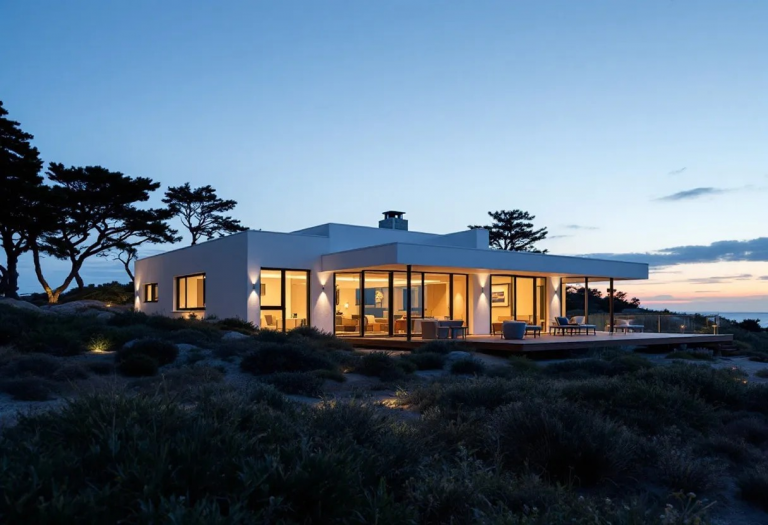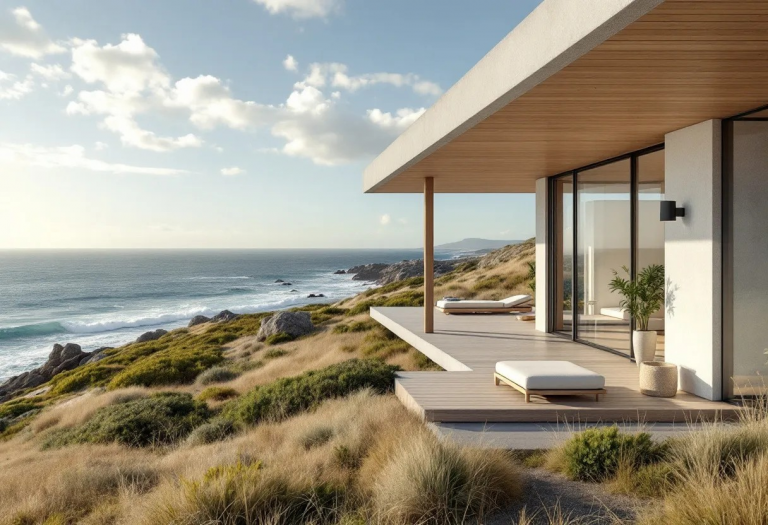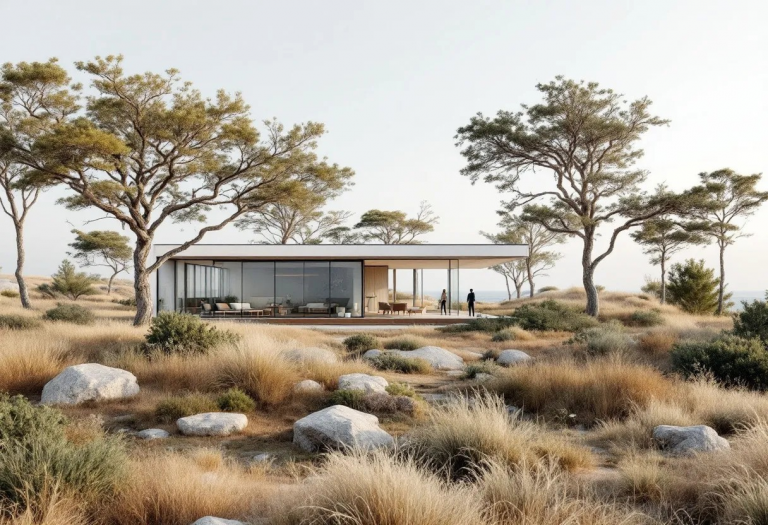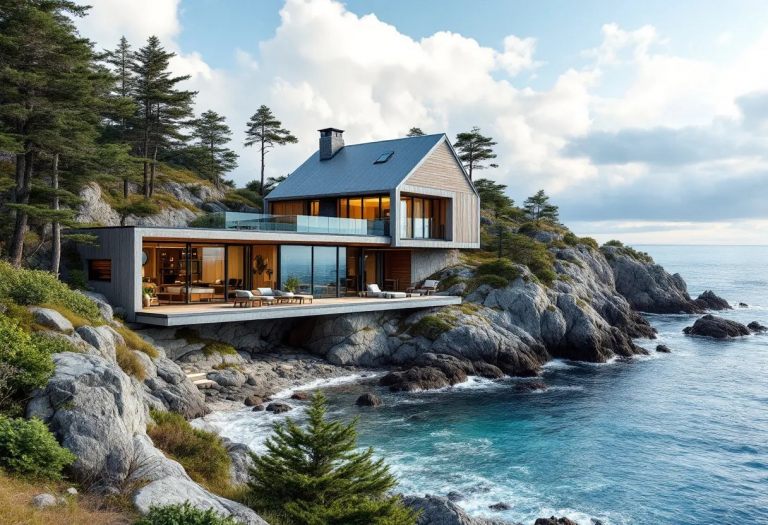Le télétravail est devenu monnaie courante. Créer un espace où l’on se sent bien, où l’on est à la fois productif et inspiré, c’est un vrai défi. Surtout quand on a la chance d’habiter près de la mer! Comment faire pour que son bureau soit à la fois un lieu de travail efficace et un cocon de sérénité, en harmonie
Le style minimaliste côtier, c’est l’élégance de la simplicité. C’est une connexion profonde avec la nature, une esthétique pure qui s’inspire de la mer. Mais attention ! Ce style doit être adapté à chaque climat pour garantir confort, durabilité et une belle cohérence. Adapter le minimalisme côtier, c’est bien plus que choisir des matériaux. C’est penser aux techniques de construction,
L’écart entre nos villes bétonnées et la nature se creuse. Heureusement, une solution existe pour retrouver un peu de calme : la déco intérieure côtière minimaliste. Imaginez un refuge de douceur, d’authenticité et d’harmonie. On y intègre des éléments naturels comme du bois flotté, des coquillages, des plantes… L’idée, c’est de créer un espace épuré, mais chaleureux. Chaque détail compte.
L’architecture en bord de mer a toujours recherché l’harmonie entre confort et respect de l’environnement. Et devinez quoi ? La ventilation naturelle est une solution clé ! Imaginez une maison qui respire grâce aux brises marines. C’est exactement ce que permet ce système simple, efficace et écologique. On vous dit tout ! Un mode de ventilation économique et écologique L’atout
Envie d’un jardin côté mer, mais sans les contraintes ? Un jardin minimaliste, où le beau rime avec facile à vivre ? C’est tout à fait possible ! Oubliez l’idée d’un jardin vide. Pensez plutôt à un espace pensé, avec des plantes qui résistent aux embruns, qui n’ont pas soif en permanence, et qui demandent peu d’entretien. En tant qu’architecte
Dans le monde du design, on assiste à un retour aux sources. L’harmonie entre l’esthétique, la fonctionnalité et le respect de l’environnement est devenue primordiale. Les cuisines côtières minimalistes sont l’incarnation de cette philosophie. Simplicité, luminosité et intégration avec le paysage maritime sont les maîtres mots. Mais comment ces espaces répondent-ils aux exigences modernes de durabilité et de technologie ?
Le mariage entre le minimalisme et le design côtier ne se limite pas à l’esthétique purement visuelle. L’éclairage y joue un rôle essentiel. Il orchestre l’ambiance, souligne l’architecture et renforce l’harmonie entre la maison, la nature et l’environnement marin. L’idée ? Des luminaires discrets, des éclairages indirects et des systèmes de contrôle intelligents. C’est la base d’une conception éclairée, à
Imaginez un endroit… Un lieu où la simplicité est reine. Où chaque détail est pensé avec soin. Où l’océan devient votre voisin. Construire une maison de vacances minimaliste au bord de l’eau, c’est un défi. Mais quel défi passionnant ! C’est marier respect de l’environnement, budget maîtrisé et beauté du paysage. Ce guide est là pour vous accompagner. De la
Les maisons au bord de l’eau, c’est le rêve, non ? Mais il y a un hic. Ces constructions sont particulièrement exposées. Vents forts, humidité, sel… La totale ! Alors, comment construire une maison qui résiste et qui soit belle, tout en respectant l’environnement ? La réponse : minimalisme et durabilité. Deux mots-clés pour un habitat côtier réussi. Le minimalisme
Choisir les bons matériaux pour une maison côtière durable : le guide ultime Construire au bord de la mer, c’est un rêve. Mais attention, une maison côtière est soumise à rude épreuve ! Humidité, vent, sel… Pas facile de trouver les bons matériaux. Alors, comment faire le bon choix pour une maison à la fois belle, durable et respectueuse de




